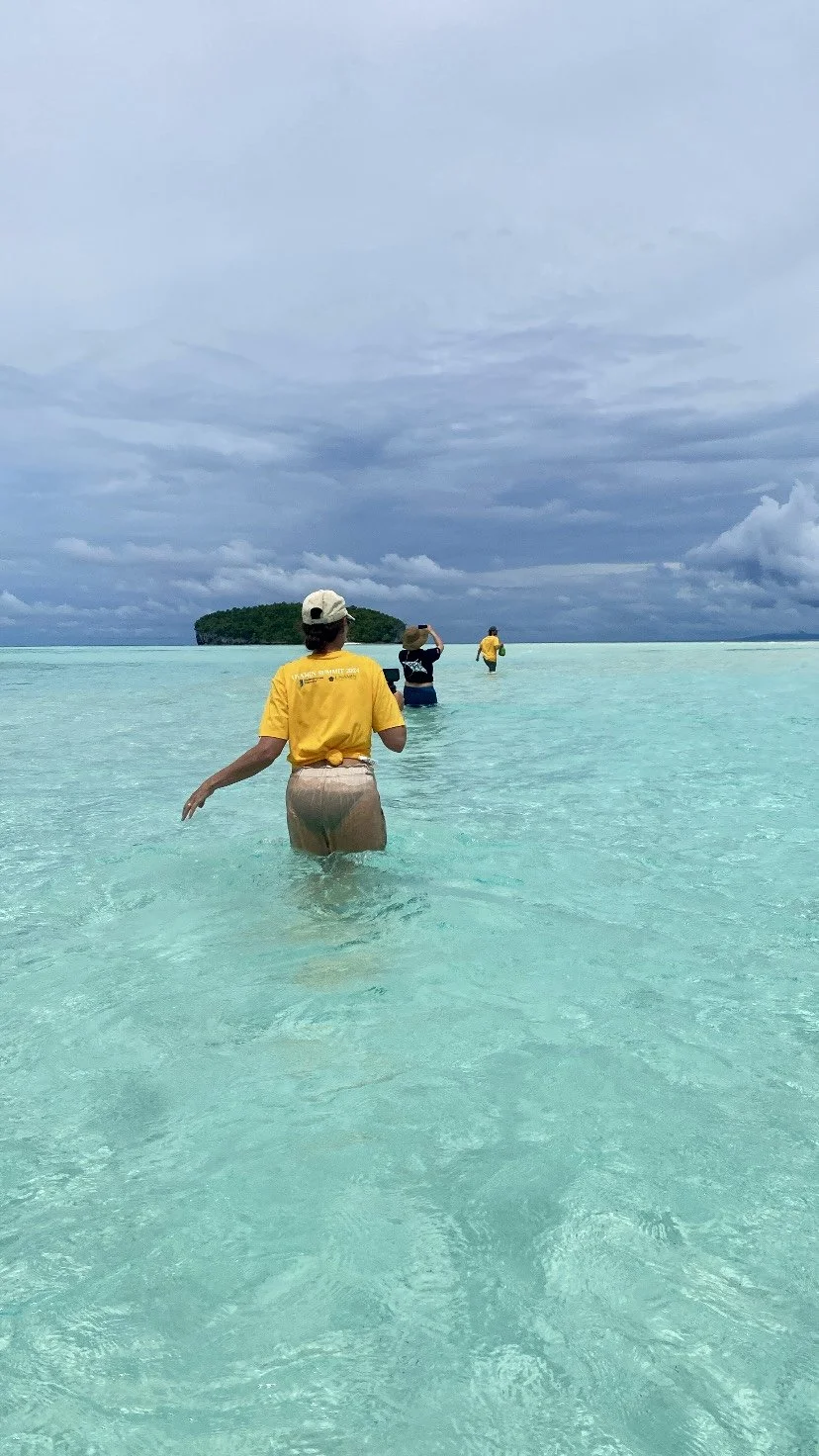
Raja Ampat

Raja Ampat: Where Currents Collide and Cultures Unite
In the far eastern reaches of Indonesia lies a mosaic of turquoise water and limestone karsts—Raja Ampat, a place where time slows, coral gardens flourish, and humanity reconnects with nature in its most vibrant form.
My journey began in Ambon, where I joined a group of passionate students and researchers from local universities. It was more than a scientific exchange—it was a convergence of worldviews, cultures, and a shared mission: to understand, protect, and celebrate the beating heart of the Coral Triangle.
From Ambon, I travelled north to Sorong, the gateway to Raja Ampat. Here, I continued building relationships with local scientists, Traditional Owners, and conservation leaders. Through workshops, reef surveys, shoreline cleanups, and shared meals, we forged bonds that transcended borders. Laughter echoed across boat decks and through village kitchens. Knowledge flowed freely—in both directions—as we compared methodologies, mapped reef health, and discussed community-based approaches to sustainability.
Living Mosaic of Biodiversity and Humanity
Raja Ampat is more than just a biodiversity hotspot—it's a living, breathing network of reef systems, hosting over 75% of the world’s known coral species and an explosion of marine life that rivals any place on Earth. I remember descending into a curtain of swirling barracuda, hearing the crackle of life beneath the surface, and rising again to the sound of children laughing on a sun-bleached jetty.
Above water, the diversity was equally stunning. Each island brought new traditions, foods, and stories. I was welcomed with open arms into villages where hospitality came in the form of coconut rice, reef fish grilled over coals, and endless smiles. We ate together, swam together, and danced under the stars. It wasn’t just the science that left a mark—it was the human connection.
Facing Shared Challenges with Shared Strength
The Coral Triangle is under siege—from climate change, overfishing, pollution, and plastic waste. In every conversation, one truth became clear: no country can solve this alone. But together, with collaborative research, shared data systems, traditional ecological knowledge, and new conservation technologies, we can chart a better future.
We talked openly about the challenges—marine debris choking reef flats, heatwaves pushing corals to their limit, and the need for marine zoning that empowers local communities. What inspired me most was the fierce hope that flowed from every workshop and every shoreline walk. We were not just scientists or students—we were stewards. And we knew our greatest strength was our unity.
From Raja Ampat to the Abrolhos Islands: One Connected Reef
As I flew back across the archipelago, I watched the vibrant blue fade into the horizon and thought of home—the Abrolhos Islands, where I now work with the Department of Primary Industries and Regional Development. Although thousands of kilometres separate Raja Ampat and the Abrolhos, they are connected by more than currents.

We are all downstream.
The Coral Triangle’s tail reaches through Timor and the Indian Ocean to Western Australia. The species that live on our reefs, the waters that nourish our fisheries, and the knowledge passed down from one coastal community to another—they all flow together.
At the Abrolhos, I bring the lessons of Raja Ampat with me: the power of cross-cultural partnerships, the urgency of action, and the unshakeable joy that comes from protecting something truly precious. Whether tagging turtles, restoring corals, or navigating marine policy, I carry those stories, those smiles, and that sense of global kinship.

